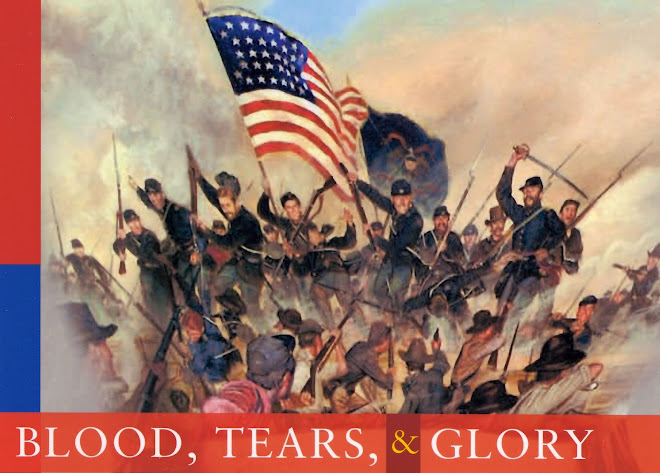The Peace of Shiloh
The 45,000 Confederates advancing towards Grant were supposed to arrive today at an intersection about four miles from the Union encampment. Thanks to muddy roads, the inexperience of the troops, and Beauregard’s poorly organized line of march, few do.
Even the Confederate commander. Maj. Gen. Albert Sidney Johnston, gets a late start. He doesn’t leave his headquarters in Corinth until this morning, By afternoon he has reached a tiny cluster of log cabins called Monterey He commandeers one of the cabins for his headquarters. Monterey is less than half way to the expected battleground at Pittsburg Landing.
Because of the unexpectedly slow advance, Johnston postpones the attack on Grant until tomorrow. Meanwhile, the Union camp is seeing signs that something is up, but comprehension where it counts—at top command level—is lacking.
There is a small skirmish between Confederate cavalry scouts and a few Union pickets, resulting in one wounded Union soldier.
Somebody in the 77th Ohio notices small animals scurrying out nearby woods and so three men of the 77th stroll out to see what the cause might be. They see a swarm of Confederates in the distance—apparently an advance guard—and send a message to their division commander, Brig. Gen. William Tecumseh Sherman.
But Sherman, who suffered an emotional break in Kentucky over real or imagined enemy threats, has an entirely new frame of mind. Instead of following up on the warning from the 77th Ohio, he orders the messenger arrested for spreading a false alarm. (The order was later rescinded.)
In the afternoon, Col. Ralph Buckland orders his brigade—consisting of the 48th Ohio, 70th Ohio, and 72nd Ohio—out of camp for drill. They are expecting to find eight Union picket guards on the camp’s outskirts—but they have vanished, perhaps captured. Buckland’s men go looking for the missing men and get in to a fight with some Confederates. Sent to Buckland’s aid, Maj. Elbridge G. Ricker of the 5th Ohio Cavalry captures nine prisoners and sees a large enemy force in the distance, including cavalry and artillery. Ricker estimates the enemy force at 2,000 men.
Buckland and Ricker rush to Sherman, warning him an enemy offensive may be in the offing. Sherman scornfully retorts that it must be an enemy reconnaissance in force, sneering, “Oh, tut, tut. You militia officers get scared too easily.”
Only the day before, Sherman wrote his wife, Ellen, “We are constantly in the presence of the enemy’s pickets, but I am satisfied they will await our coming at Corinth or some point on the Charleston Road.”
The relaxed Sherman took time to describe the pleasant climate: “The weather is now spring-like, apples & peaches in blossom and trees beginning to leave. Bluebirds singing and spring weather upon the hillsides.”
Shiloh—the word is often taken to mean “peace” or “giver of peace”—is a lovely place in the spring.
IT’S COMING SOONER THAN YOU THINK: April 12, 2011—less than 3½ years from now!—will be the 150th anniversary of the outbreak of the Civil War. In 1861, April 12 was the day Confederates opened fire on Fort Sumter in Charleston Harbor.
Your suggestions, comments, and questions about this blog are always welcome. Address the author: Ohioan@bloodtearsandglory.com
For more information about the author and his newest book, please go to http://www.orangefrazer.com/btg



No comments:
Post a Comment